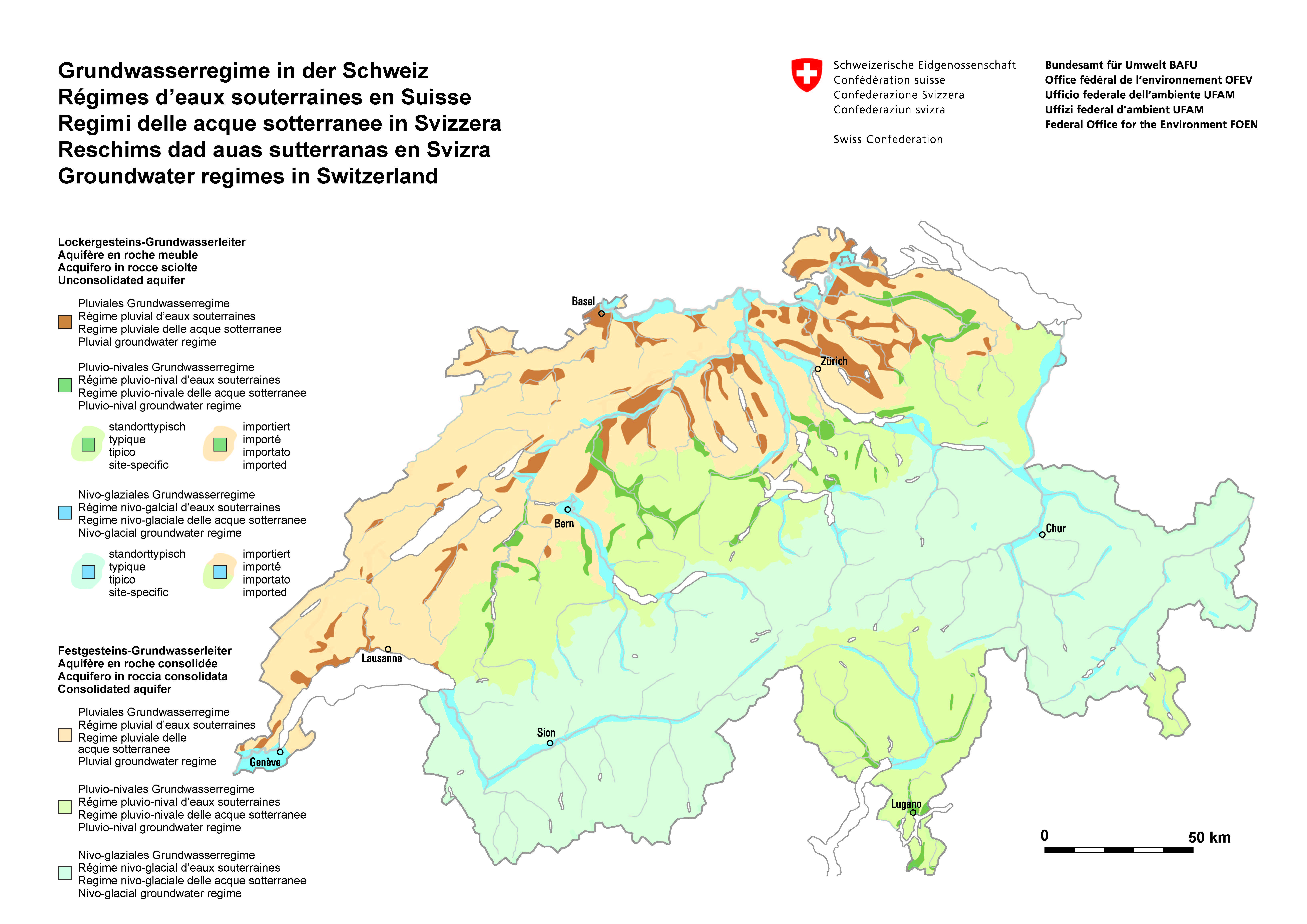Groundwater levels and spring discharges usually display a recurring, annual pattern, i.e. a 'groundwater regime', just as rivers follow a 'flow regime'.
The groundwater regime reflects the long-term, average annual cycle of groundwater levels and spring discharges. There are three types of groundwater regime in Switzerland: pluvial, pluvio-nival and nivo-glacial.
Pluvial groundwater regime
The pluvial groundwater regime is typical for the Jura and Swiss Plateau. Groundwater recharge occurs mainly through local precipitation in winter and spring. As a result, groundwater and spring discharge in near-surface groundwater resources reach their maximum level from January to March and their minimum level in late summer (August to September). Greater groundwater depth means that the maximum and minimum levels occur later, thus influencing the annual cycle.
Pluvio-nival groundwater regime
A pluvio-nival groundwater regime results from the interaction of groundwater recharge from precipitation and snowmelt. This type of regime is typical for the northern Alpine foothills and the area south of the Alps, where maximum groundwater level and spring discharge occur in March and April as a result of snowmelt and spring rainfall, and their minimum levels occur in winter. Frequent orographic lift south of the Alps in spring and autumn giving rise to precipitation means that maximum levels occur twice (in May/June and in October/November).
Nivo-glacial groundwater regime
The nivo-glacial groundwater regime is typical for the Alps. Since most of the winter precipitation here falls as snow and therefore does not contribute directly to groundwater recharge, groundwater levels and spring discharge in these regions are at their minimum between December and February and at their maximum between May and July following snow and glacier melt.
Imported groundwater regime
In valley plains, river water often infiltrates the adjacent groundwater. Where this happens, groundwater has the same regime as the river. Large rivers, such as the Aare, Rhine and Rhone, transport the nivo-glacial regime from the Alps far into the Swiss Plateau, where it is transferred into the adjacent groundwater through river water infiltration. This is referred to as an imported groundwater regime. With increasing distance from the watercourse, the proportion of river water in the groundwater decreases and hence also the characteristics of the imported regime.

Further information
Links
Documents
Last modification 17.05.2022





